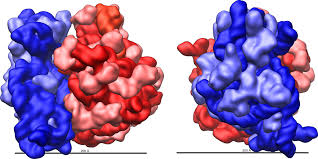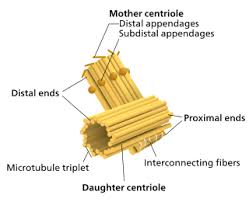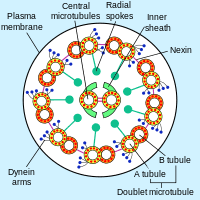INTRODUCTION
- Plastids are found in all plant cells in euglenoids etc. Depending upon their colour and pigments they contain, these are of three main types- leucoplasts, chromoplasts and chloroplasts.
1 Leucoplasts:- they are colourless plastids which generally occur near
the nucleus in non-green cells.They are variable in size. Form and store nutrients. Grainum is absent.
There are three type of special leucoplasts:-
(i) Amyloplast:– They are starch containing leucoplasts, e.g. Potato tuber,
rice etc.
(ii) Elaioplasts:– They store fats and oils e.g castor.
(iii) Aleuroplast:- These leucoplasts store proteins e.g. aleurone cells of maize.
- Chloroplast:-
> Chloroplasts are the powerhouses of plant cells, responsible for photosynthesis, the process by which plants convert light energy into chemical energy, producing oxygen as a byproduct.> These tiny organelles are what give plants their green color due to the pigment chlorophyll, which absorbs light energy for photosynthesis.
> Chloroplasts are essential for plant survival, providing them with the energy they need to grow and thrive.
2.These plastids are yellow, orange or redish in colour because of presence of carotenoid pigments. Chromoplast sare formed either from leucoplasts or chloroplasts. Change of colour from green to redish during the ripening of tomato and chilli is due to transformation of chloroplasts to chromoplasts. The ornage colour of carrot root is due to chromoplasts.
3. Chloroplasts:- They are greenish plastids which possess photosynthetic pigments, chlorophyll and carotenoids and take part in the synthesis of food.
Majority of the chloroplasts of the green plants are found in the mesophyll cells of the leaves. They vary in size, shape and number.
Shape:- They may be spherical, lens shaped, oval, discoid or even ribbon shaped in some plants.
Structure of chloroplast:-
(i) like mitochondria, chloroplasts are also double membrane-bound organelle having outer and inner membrane. The inner membrane is relatively less permeable to substances than outer membrane and thus ,
has more proteins including carrier proteins. The space enclosed by the inner membrane of the chloroplasts is called stroma. Stroma contains
A large number of organized flattened membranous sacs called thylakoids which are arranged in stacks like the piles of coins called grana (sing: granum) or the intergranal thylakoid.
(ii) The thylakoids different grana are connected by flat membranous tubules called the stroma lamellae. The membrane of the thylakoids enclosed a space called lumen.
(iii) The stroma of the chloroplasts contain enzymes required for the synthesis of carbohydrates and proteins. It also contains small, double- stranded circular DNA molecules and 70S ribosomes.
The chloroplasts performs various functions like:-
(i) Photosynthesis:- Light t reaction (in thylakoids), dark reaction ( in stroma)
(ii) Storage of starch.
Notes:-
Origin:- Mitochondria and chloroplasts are self duplicating organelles. New mitochondria and chloroplasts arise by the divisionof pre-existing ones. Or from proplastids in case of chloroplast.
Semi-autonomous organelle:- Mitochondria and chloroplasts are semi-autonomous cell organelles. They are capable of self duplication. For duplication they have circular DNA, 70S ribosomes and different types of RNAs i.e, mRNA, tRNA for protein synthesis. They can synthesise some of their proteins, but they receive other proteins fromcytoplasm.
They are also believed to be bacterial endosymbionts of of cells, because
(1) They have their own nucleic acids (circular ds DNA na RNA) and 70S ribosomes .
(2) Their membrane resembles with that of bacteria (having proteins called porins)
(3) ETS and ATP forming machinery is present.
Ribosomes are smallest non—membranous, ribonucleprotein paricles (r-RNA + protein). Ribosomes were discovered by George Palade in 1953 in the animal cell.
Structure of Ribosomes:– The ribosomes are composed of two subunits, one large dome shaped and other smaller cap shaped.
The two ribosomes subunits remain united with each other due to a specific concentration of the mg 2+ ions. When the concentrationof Mg2+ ions reduces below a critical level both ribosoemal subunits get separated. But, by raising the concentration of Mg2+ ions in the matrix, the two ribosomes become associated with each other and is known as the dimer. During protein synthesis, many ribosoms form a chain on a eukaryotic ribosomes are 80S.
(a) 70 S ribosomes have ribonucleoproteins un the ratio of 60:40 (RNA: protein).
70 S ribosomes consist of:-
30 S smaller subunit- 21 proteinmolecules and 16 rRNA.
50 S large subunit- 34 proteins molecules and 23 S and 5 S rRNA.
(b) 80 S ribosomes have ribonucleoproteins in the ratio 40:60 (RNA:protein)
80 S ribosomes consist of:-
40 S smaller subunit- with 33 protein molecules and a single 18S- rRNA.
60 S large subunit – about 40 protein molecules and three types of rRNA-28S, 5.8S and 5S.
Functions:-
Ribosomes are sites of protein synthesis. The free ribosomes non-secretory proteins,while ER bound ribosomes sythesise proteins. Free ribosomes synthesise structural and enzymatic proteins for use inside the
cell.The attachedribosomes synthesise for transport. Thus, these organelles are also known as proten factories. Newly synthesise proteins are processed with the help of chaperons protein.

It is made up of extremely minute, fibrous, filamentous and tubular proteinaceous structures which form the structural framework inside the cell.The cytoskeleton occurs only in eukaryotic cells and is involved in many functions such as mechanical support, motility , maintenance of the shape of the cell.
(A) Microtubules:– The microtubules are found in the cytoplasmic matrix. They also occur in cilia, flagella, centrioles and basal bodies, mitotic appararus etc.
The microtubules are hollow, unbranched cylinders generally about 25 nm in diameter with a hollow core of about 15 nm. The boundary of a microtubule is composed of 13 parallel protofilaments. Each protofilament is made up of Alpha and Beta subunits of tubulin protein (non contractile protein).
The assembly and disassembly of microtubules require GTP and Ca2+ .
Functions:-
(i) These help in the spindles and astral rays formation during cell division.
(ii) These form the cytoskeleton of cilia and flagella.
(iii) These help in generating the shape, rigidity and form of the cell and cell motility.
(iv) Microtubules help in the anaphasic movement of chromosomes.
(v) Microtubules help in the intracellular transport of nutrients and inorganic ions.
(vi) Position of future cell plate is determined by microtubules.
(B) Microfilaments:-
The microfilament are solid , unbranched, rod-like fibrils of indefinite length. They are mainly composed of a globular protein actin, but have filamentous
protein myosin also. They form an extensive network in the cytoplasm of cells and may be associated with plasma membrane.
Functions
(i) The microfilaments provide support to plasma membrane.
(ii) These represent the contractile system of the cell and are involved in cytoplasmic streaming and amoeboid movements.
(iii) Help in pseudopodia formation.
(iv) These help in the formation of cleavage furrow during cell division.
(C) Intermediate Filaments
Non-contractile hollow filaments of acidic proteins. They are involved in formation of scaffolds for chromatin and in forming a basket around nucleus.
Centrosome is an organelle usually containing two cylindrical structures called centrioles, which are surrounded by a cloud of amorphous pericentriolar material called centrosere or kinoplasm. These two centrioles called diplosome, are localized in the centrosome at right angles to each other.
The centrioles are found in almost all eukaryotic cells like animal cells, fungi and algae but not found in higher plant cells.
Structure of a centriole :-
(i) A centriole possesses a whorl of nine evenly spaced peripheral fibrils. It is absent in the centre.
Therefore, the arrangement is called 9+0.
(ii) Each fibril is made up of three subfibres. Therefore, it is called triplet fibrol consisting of sb-fibres A,B, C.
(iii) The adjacent triplet fibrils are connected by C-A proteinaceous linkers.
(iv) The centre of thecentriole possesses a rod-shaped proteinaceous mass known as hub. nine proteinaceous strands are developed towards the peripheral triplet fibrils. These strands are called radial spokes.
(v) Due to the presence of radial spokes and peripheral fibrils, the centriole gives a cartwheel appearance.
(vi) the centrioles are surrounded by dense amorphous, protoplasmic spheres in one or more series called as massules or pericentriolar satellites. They help in the formation of new centrioles.

Functions:-
(i) Centrioles help in the formation of basal bodies which give rise to cilia and flagella.
(ii) centrioles form the spindle fibres that give rise to spindle apparatus during cells division.
(i) Cilia and flagella are membrane-bound extensionof the plasma membrane.
(ii) They are made up of four parts,, basal body, rootlets, basal plate and shaft. The shaft or axoneme, consists of nine microtubule doublets arranged in a circle around two central tubules. This is 9+2 pattern of microtubules. From the A sub-fibril 2 arms arise. The upper arm is provided with a hook and the lower arm is connected with A-B linker. The arms are made up of dynein protein, whereas the AB linkers are made up of Nexin protein

Difference between Cilia and Flagella
Cilia Flagella
- The number of cilia per cell 1. The number of flagella per cell is
Is usually very large. Usually 1-4.
- They are smaller in size. 2. They are longer in size.
- Cilia usually occur through 3. Flagella are commonly found at one
Out or major part of the of the end of the cell.
Surface of a cell.
- Cilia help in locomotion, 4. Flagella help in locomotion.
feeding, circulation etc.